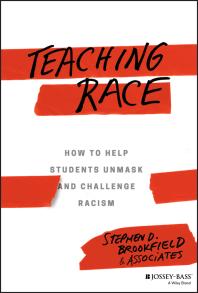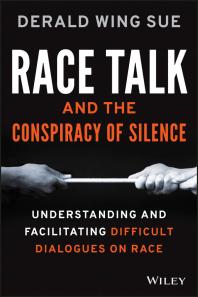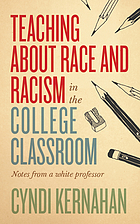Building an Inclusive Classroom
Welcome, fellow educator.
Building an inclusive classroom is an iterative process. This guide seeks to support educators looking to put practical strategies into practice. Start by engaging with resources to which you feel drawn. The guide and materials are meant to support you and address the following questions:
If we seek to encourage critical thinking in our students, how can we meaningfully engage with anti-racism and social justice?
-
How can we incorporate anti-racism and inclusive pedagogy into our courses?
-
How can faculty design assignments and activities that engage students in thinking critically about anti-racism?
-
How can we help our students understand the relevance, depth, and breadth of anti-racism?
-
How can we help our students logically process statement and attitudes surrounding anti-racism?
-
How can a critical thinking approach help develop intellectual traits of humility, integrity, courage, empathy, and fair-mindedness in faculty, staff, and students*?
*from Broward College's Teaching Black Lives Matter Libguide
Want to Add a Tool to Your Equity Toolbox?
Read the article Anti-racist pedagogy: from faculty's self-reflection to organizing within and beyond the classroom by Kyoko Kishimoto.
Take this Introduction to Critical Race Theory course by Brown Professor Keene
Explore Dr. Nicole A. Cooke's Anti-Racism Resources for All Ages
What is Implicit Bias?
Yale's Poorvu Center for Teaching and Learning notes that "Implicit bias refers to unconscious attitudes, reactions, stereotypes, and categories that affect behavior and understanding.
In higher education, implicit bias often refers to unconscious racial or socioeconomic bias towards students...(Boysen, et. al 2009).
Instructors can hold assumptions about students’ learning behaviors and their capability for academic success which are tied to students’ identities and/or backgrounds, and these assumptions can impede student growth (Staats, et. al, 2017)."
Awareness of our own implicit biases is a step toward an inclusive classroom.
Ready for self-reflection?
Take Harvard's Implicit Bias test to examine implicit bias and take steps to become more inclusive.
Read the article Do College Instructors Have Implicit Bias toward Latino-Accented English Speakers? or this one on Creating inclusive classrooms by engaging STEM faculty in culturally responsive teaching workshops.
Use the Anti-Racist Educator Self-Examination Questionnaire and Rubric and offer the Anti-Racist Student Self-Examination Questionnaire.
Explore Dr. Nicole A. Cooke's Anti-Racism Resources for All Ages.
Visit additional resources on self-reflection and bias from the Padlet below
What is Universal Design for Learning?
Universal Design for Learning (UDL) is a framework to improve and optimize teaching and learning for all people based on scientific insights into how humans learn. The UDL Guidelines are a tool used in the implementation of Universal Design for Learning. These guidelines offer a set of suggestions that can be applied to any discipline or domain to ensure that all learners can access and participate in meaningful, challenging learning opportunities. (From Cast: About Universal Design of Learning)
Ready to learn about Universal Design for Learning (UDL)?
Read the Inclusive Pedagogy and Universal Design Approaches for Diverse Learning Environments
Use the UDL Guidelines as a framework to improve and optimize teaching and learning for all people
Explore Accessibility Across the Curriculum to discover how to increase accessibility awareness
Visit additional resources on universal design for learning (UDL) from the Padlet below
Creating an inclusive classroom means practicing how to navigate difficult conversations.
We want to get it right, but we need a strategy. As educators, how we manage a conversation or engage in "certain behaviors can close opportunities for learning and decrease students’ sense of belonging" ("Inclusive Classroom").
The following resources provide tools and strategies for engaging in and managing difficult conversations in the college classroom.
Want to learn more about Facilitating Difficult Conversations?
Read the articles Navigating Difficult Conversations in the Classroom and "Transforming Conflict in the Classroom: Best Practices for Facilitating Difficult Dialogues and Creating an Inclusive Communication Climate".
Use the Toolkit for the Gentle Catalyst and read Teacher and Student Perceptions of Microaggressions in the Classroom.
Watch Priya Vulchi and Winona Guo's Ted Talk: What It takes to be racially literate
Explore the Southern Poverty Law Center's Let's Talk: Discussing Race, Racism, and Other Difficult Topics with Students.
Additional articles are available upon request via ILL:
Suárez-Orozco, C., Casanova, S., Martin, M., Katisaficas, D., Cuellar, V., Dias, S., & Smith, N. (2015). Toxic rain in the classroom: Classroom interpersonal microaggressions. Educational Researcher, 44(3),151-160.
View additional resources on managing challenging conversations on the Padlet below
Why Create an Inclusive Classroom?
As so concisely stated in the UC Davis Just-In-Time Teaching Guide, "Creating inclusive spaces within the classroom is a vital enterprise that can help ensure that all students have equal opportunities to thrive."
Here are some steps educators can take to promote an inclusive classroom climate*:
- Examine your personal assumptions of the students’ background, prior knowledge, and experience
- Demonstrate high expectations for all students with an authentic belief that all can succeed
- Learn all students’ names and encourage them to address each other by name
- Actively monitor your class for potential stereotype threat and broad generalizations
- Create an environment prioritizing a sense of belonging (e.g., where multiple groups feel “connected”)
- Cultivate connections between students, the discipline, and scholarly and professional communities
- Ensure that students have an awareness of and access to campus resources that support their unique identities
- Maintain a classroom free from microagressions and address microagressions when they occur
- Facilitate a space where all classroom exchanges are tolerant and respectful (e.g, norm setting)
- Be transparent about instructor and student roles in the classroom, discussions, and activities and communicate them explicitly and consistently throughout the quarter (e.g., during the first day of class, in the syllabus, etc.)
- Acknowledge the unique identities, experiences, strengths, and needs of your students, embracing student diversity as an asset and celebrating the physical and perceived differences (e.g., a safe space where differences are not only respected, but also honored and valued)
Interested in learning more about creating an inclusive classroom?
Read this Tanner 2013 article on structuring the classroom.
Use the University of Michigan checklists as a guide to inclusive teaching principles.
Explore this Chronicle of Higher Education article on "How to Make Your Teaching More Inclusive" or A Guide to Equity and Antiracism for Educators.
Delve into additional resources on the Padlet below.
Teaching and talking about race in the classroom
The topic of race and racism with students can be uncomfortable- that's okay.
However, ignoring race and shying away from these conversations in the classroom can be harmful to marginalized students and faculty.
"Acknowledging the social construct of race and racism and the ideology of white supremacy recognizes the problem so that we are not harmful in our ignorance and so that, together, we can strive for solutions" (Dena Simmons).
If you'd like to learn practical strategies and understand the theoretical foundations of teaching racism
Read Teaching Race, Racism, and Racial Justice: Pedagogical Principles and Classroom Strategies for Course Instructors by Harbin, et al. to gain an understanding of pedagogical principles, and for examples of course design strategies, and classroom practices.
Delve into the many resources in Vanderbilt University's Teaching Race: Pedagogy and Practice Guide.
For a deeper dive, explore the following eBbooks from the JWU Library:
 Teaching Race: How to Help Students Unmask and Challenge Racism by Stephen D. Brookfield
Teaching Race: How to Help Students Unmask and Challenge Racism by Stephen D. Brookfield
Teaching Race is packed with activities, suggestions and exercises to provide practical real-world help for teachers trying to introduce race in class.
Race Lessons: Using Inquiry to Teach about Race in Social Studies by Prentice T. Chandler
This volume will begin to help teachers and teacher educators start the conversation around realistic and practical race pedagogy. This work is unique in that it represents an attempt to use Critical Race Theory and inquiry pedagogy (Inquiry Design Model) to teach about race in the social science disciplines.
 Race Talk and the Conspiracy of Silence: Understanding and facilitating Difficult Dialogues on Race by Derald Wing Sue
Race Talk and the Conspiracy of Silence: Understanding and facilitating Difficult Dialogues on Race by Derald Wing Sue
Discussions about race do not have to result in disastrous consequences, and can in fact be highly beneficial to all parties involved. It's important that people have the ability to converse openly and honestly with their students, colleagues, children, and neighbors, and Race Talk provides the path for achieving this goal
 Teaching about Race and Racism in the College Classroom by Cyndi Kernahan
Teaching about Race and Racism in the College Classroom by Cyndi Kernahan
Kernahan provides evidence for how learning works with respect to race and racism along with practical teaching strategies rooted in that evidence to help instructors feel more confident. She also differentiates between how white students and students of color are likely to experience the classroom, helping instructors provide a more effective learning experience for all students.
